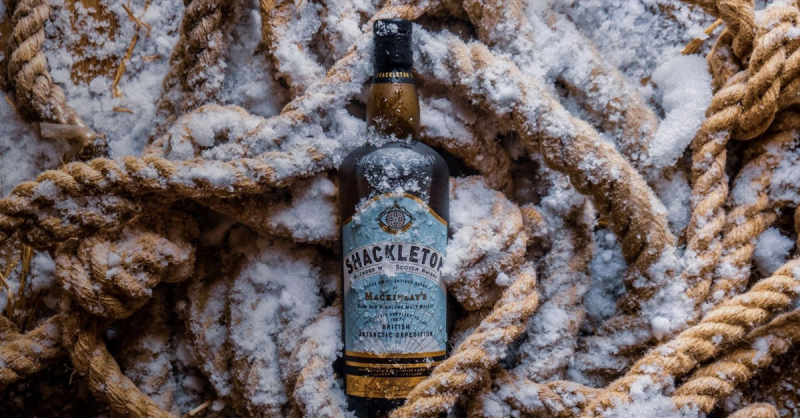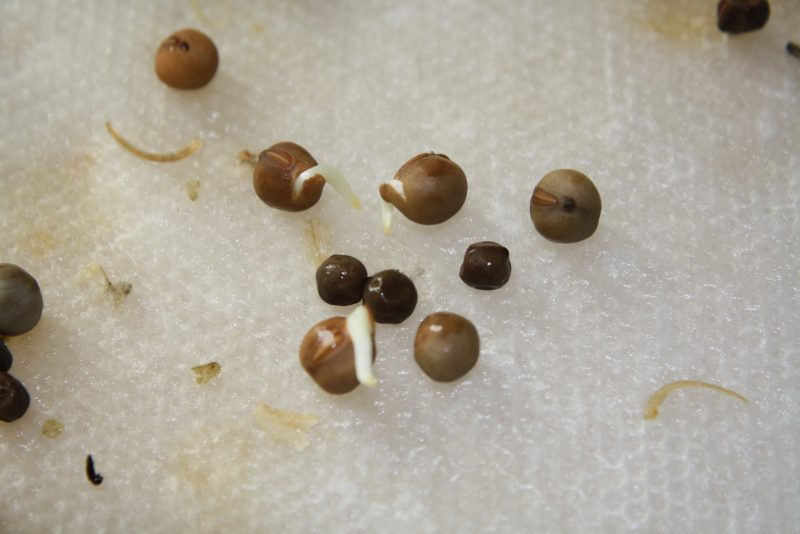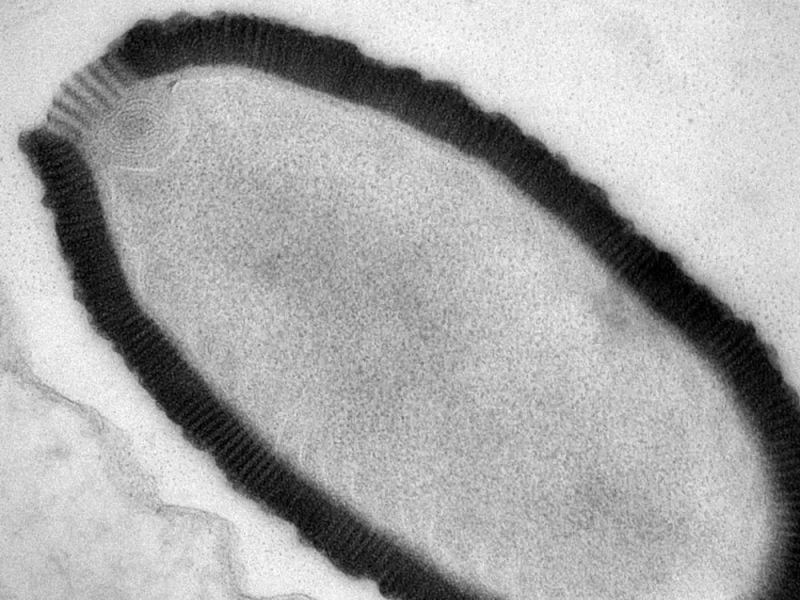Top 10 Amazing Things Found in Ice
Ice covers roughly 10 percent of planet’s surface. It is a harsh and unforgiving element, one that even today proves a challenge for the men and women who try ... read more...to master and overcome it. But at the same time, ice is a really useful medium when it comes to preserving things as they were decades, centuries, even millennia ago. Glacial archaeology is a relatively new field, but one that has uncovered a lot of unexpected discoveries as more and more glaciers recede and reveal the secrets they’ve been hiding. Here is a list of top 10 Amazing Things Found in Ice that you should not miss.
-
In first place on the Amazing Things Found in Ice list are five abandoned 100-year-old Mackinlay whiskey casks that were discovered in Antarctica in 2006. The containers were discovered in the cabin of explorer Ernest Shackleton and contained 11 bottles of Scotch Whiskey. To safeguard the bottles, they were carefully wrapped in paper and straw. Shackleton's expedition to Antarctica in 1907 was undoubtedly difficult. The liquid within the bottles was, of course, frozen due to the extreme cold, but when the bottles were restored to room temperature, the whiskey could be heard splattering.
The priceless discoveries are obviously kept since they are historically significant, but a sample was provided to Scottish distiller Whyte and Mackay. Master Blenders will also be given the opportunity to evaluate the sample and see if they can learn and apply any relevant knowledge about the recipe. Scientists from New Zealand then investigated the bottles and discovered that the alcohol in the whisky was still intact.
Found: in 2006
Location: Antarctica

vinepair.com 
npr.org -
The most unsettling frozen discovery ever made occurred in 1999, when a team of archaeologists climbed the summit of Mount Llullaillaco on Argentina-border. Chile's They discovered evidence of one of humanity's most heinous acts, human sacrifices, inside an icy tomb. Not one, but three infants were placed in a confined chamber and left to freeze to death, unwittingly becoming the best-preserved ice mummies ever discovered.
The Inca sacrificed the juveniles roughly 500 years ago. They were two little children, a boy and a girl, both about six years old when they died, and a teenage girl known as La Doncella or The Maiden. The three children were given a unique diet in the months preceding up to their sacrifice, which included coca leaves and a corn beer called chicha, according to tests. Their intake of both increased dramatically in the latter weeks of their lives, implying that the children were kept in a condition of near-constant inebriation in the weeks preceding their deaths.
Found: in 1999
Location: Mount Llullaillaco, between Argentina and Chile
nationalgeographic.com 
nationalgeographic.com -
If there is one thing you would not expect to discover under ice, it is liquid water. But, as it turns out, that's not always the case. Scientists have postulated since the nineteenth century that liquid freshwater may lie beneath the Antarctic Ice Sheet. They argued that because of geothermal heating, the temperature beneath the ice sheets may be high enough to melt the ice and generate what they now call subglacial lakes.
It wasn't until the 1970s that ice-penetrating radar proved the existence of these lakes, and it wasn't until the 1990s that they discovered the world's largest subglacial lake, Lake Vostok, located in the middle of the East Antarctic Ice Sheet. But just because they knew it existed didn't imply they could get to it. Vostok was buried beneath two miles of ice, and it wasn't until 2013 that Russian scientists were able to dig through it and recover an ice core.
Lake Vostok had been locked off from the rest of the globe for 15 million years at that point, so no one knew what to anticipate. The Russian scientists confidently said that they had discovered unidentifiable germs that were wholly novel to science, but they later recanted after their samples were tainted with drilling fluid. Lake Vostok is still alive and well, however none of it is as "otherworldly" as some had hoped.
Found: in 1990
Location: the center of the East Antarctic Ice Sheet
livescience.com 
flickr.com -
Everyone has all heard about buried riches, but people don't normally expect to find it thousands of feet above sea level, buried in ice. And yet, in 2013, a French mountain climber was crossing the Bosson glacier on his approach to the summit of Mont Blanc when he came across a strange metal box jutting out of the ice. He discovered emeralds, rubies, and sapphires valued roughly 250,000 euros inside the box, which had been resting there for over half a century.
The place is noteworthy for being the site of not one, but two distinct Air India accidents that killed 165 people, the first in 1950 and the second in 1966. The latter was a huge passenger trip aboard a Boeing 707 that slammed into the mountain, scattering debris all over the place. Because the early recovery operations were hampered by inclement weather, several objects had already been buried under snow by the time rescuers arrived at the crash scene.
That is very probable what happened to the box of jewels, which was nearly undoubtedly aboard the tragic 1966 aircraft. The mountain climber did not attempt to keep the wealth and instead turned it over to authorities, sparking a court struggle about who was the lawful owner of the rare diamonds.
Found: in 2013
Location: Bosson glacier
toptenz.net 
chamonix.net -
Discoveries uncovered in the ice can sometimes reveal answers to decades-old mysteries, such as the mysterious disappearance of Marcelin and Francine Dumoulin, who vanished without a trace nearly 80 years ago. The Swiss couple left their home on foot on August 15, 1942, and never returned. According to local legend, the two went out to milk their cows, however they could have been headed to Bern. In any case, despite the fact that search parties had been out for months following their disappearance, no one knew what had happened to them. The mystery was solved in 2017 when a ski resort worker discovered their mummified bones buried in ice.
The remains were discovered on the Tsanfleuron glacier, which is more than 8,500 feet above sea level. They were dressed in World War II-era clothing, so it was evident right away that they had been on ice for a long period, and DNA tests later proved their identities as the Dumoulins. The married pair most likely plunged into a chasm, which became their icy grave for decades. The glacier then receded due to climate change, allowing their bodies to emerge to the surface.
Found: in 2017
Location: Tsanfleuron glacier

mummipedia.fandom.com -
During the First World War, there were two armies that were engaged in their own unique fight. In what became known as the White War, the Italians and Austrians were fighting one other high in the Alps, primarily on the icy glaciers of the Dolomite Mountains.
The soldiers frequently excavated tunnels in the ice. The Austrian Corps of Engineers even excavated a full base beneath the Marmolada Glacier, complete with barracks and corridors. Everything was abandoned after the war. Salvagers were the only ones who dared to venture out there, but they were only interested in scrap metal, not antiques or records. Nature quickly reclaimed the region and buried everything under ice once they ceased showing up.
That was how things remained for over a century. But as the glaciers began to melt, they gradually revealed everything again, and people could see a century-long war. They recovered firearms, cannons, supplies, food, letters, diaries, photographs, and, of course, bodies. Particularly stunning were the well-preserved frozen bodies of two young Austrian soldiers – both of them adolescents with blond hair and blue eyes, and both with bullet holes in the skull.
Found: After World War I
Location: the Dolomite Mountains

insideclimatenews.org 
insideclimatenews.org -
Ice has been amazing at preserving not just plant life and viruses, but also animals. There is, at the moment, a strong movement among scientists to use remnants found frozen in ice to bring back extinct creatures, and the one that’s attracting the most interest is none other than the woolly mammoth.
Mammoths only became extinct a few thousand years ago and, since then, they have recovered quite a few fossils that had been frozen in ice. The title of “best-preserved mammoth” goes to Yuka, a baby that was recovered by Siberian hunters back in 2010. Although first estimated to be 39,000 years old, the age was reduced down a touch to 28,000 following more tests, but it’s the condition that scientists were interested in, not the age. Yuka had been murdered by ancient hunters who removed most of the internal organs and portions of the bones. They then left the rest of the carcass intact and apparently buried it to retrieve it later, but never did.
As Japanese scientists were able to harvest tissue samples from the muscles and bone marrow. More remarkable, they were subsequently able to implant cell nuclei from those samples into egg cells derived from mice, which then showed some type of biological activity. In other words, scientists reawakened 30,000-year-old mammoth cells. Although the activity was very faint, the Japanese researchers dubbed it a “significant step toward bringing mammoths back from the dead.”
Found: in 2010
Location: Siberia
fox59.com 
fox59.com -
Don't be concerned. But it's not all bad news: there are some interesting things waiting for them to uncover beneath the permafrost, such as the oldest seeds ever used to grow a plant. The scenario may sound like something out of an Ice Age movie, but 32,000 years ago, an ancient squirrel was preparing for hibernation and had gathered a hoard of Siberian plant Silene stenophylla seeds. The squirrel's entire burrow was then buried under snow and imprisoned in ice for thousands of years. That is, until Russian scientists from the Institute of Cell Biophysics identified it a few years ago.
The scientists sought to explore if they could grow plants from 32,000-year-old seeds after discovering that some of them still contained viable plant material when researching the frozen seeds. Keep in mind that the world record for the oldest plant material brought back to life at the time was just 2,000 years old, yet they were successful in bringing back an ancient form of Silene stenophylla that was comparable to the present plant except for the flower shape.
Founded: 32,000 years ago
Location: Siberia
ucanr.edu 
aa.com.tr -
In 2015, an Ohio State University team of microbiologists and climatologists ventured to the snowy tundra of the Tibetan plateau in search of old ice. Scientists'd devised a novel means of researching it without fear of contamination, and they were eager to see what knowledge the ice could reveal about the ecosystem thousands of years ago. The scientists traveled to the pinnacle of the Guliya ice cap, 22,000 feet above sea level, and extracted a 1,000-foot-deep core. Inside, scientists discovered viruses lots of them frozen in ice for 15,000 years.
The genetic material in that single ice core belonged to 33 different species of viruses, 28 of which were completely unknown to science. The Ohio researchers concluded that none of the bacteria were harmful to humans, but they cannot say the same for the many viruses that are currently on ice. And, when glaciers melt owing to climate change, they fear that hazardous old viruses making their way into the current world is a risk.
Found: 2015
Location: the frozen wilderness of the Tibetan plateau

toptenz.net 
toptenz.net -
Last on the list of Amazing Things Found in Ice is The Glacier Girl, a P-38 aircraft, was found in Greenland buried in ice. It was dug out of the ice and restored to its optimal condition to fly. On 15 July 1942, in the midst of World War II, six Lockheed P-38 Lightning fighter planes were ordered to make an emergency landing in Greenland. The reason for this was bad weather and poor visibility. The airmen on the downed plane were rescued, but the plane was abandoned and became buried beneath the ice. One of these six planes was recovered in 1992, 50 years later. The Greenland Expedition Society excavated it from a depth of 264 feet. It took years for them to recover the plane.
This backstory inspired her nickname, "The Glacier Girl." She was then transported to Middlesboro, Kentucky, where mechanics evaluated her and returned her to flight status. After her rehabilitation, The Glacier Girl took her first flight in October 2002. Rodney Lewis, the CEO of Lewis Energy, eventually purchased her in 2007.
Found: 1992
Location: Greenland
warhistoryonline.com 
warbirdsnews.com































